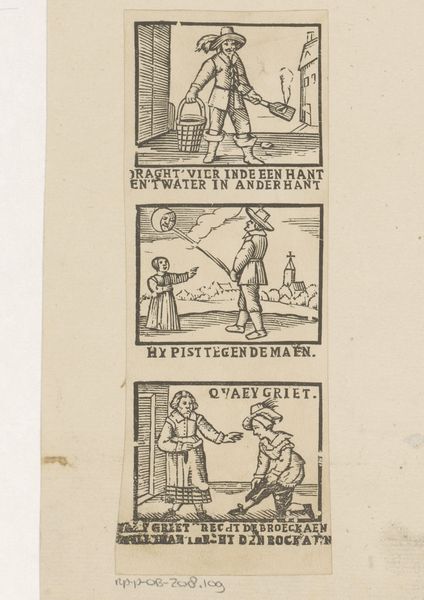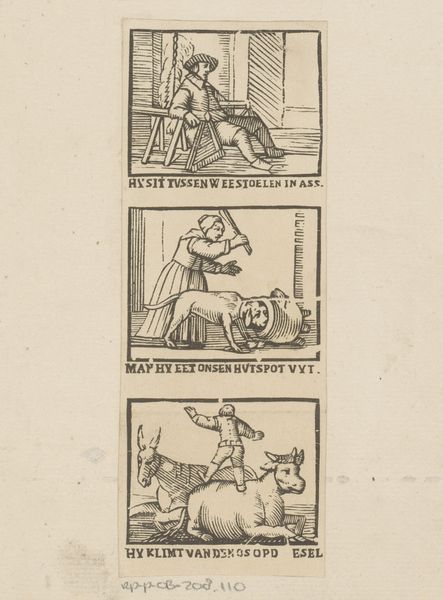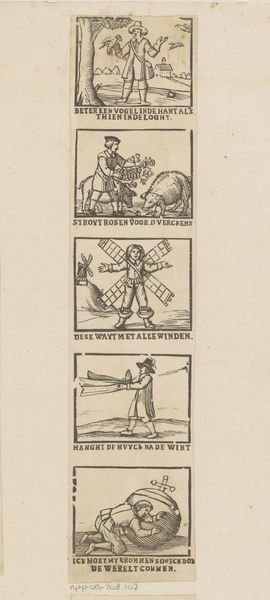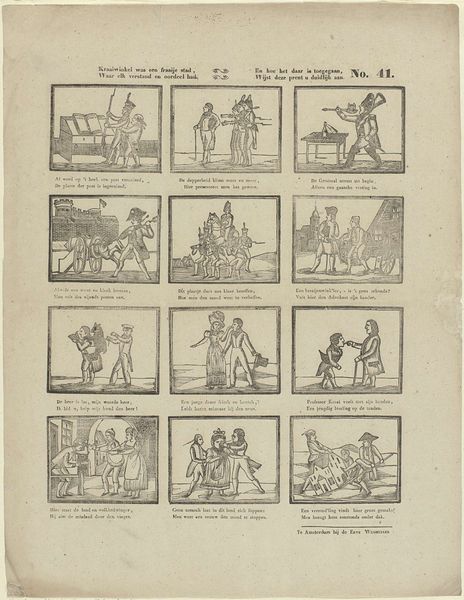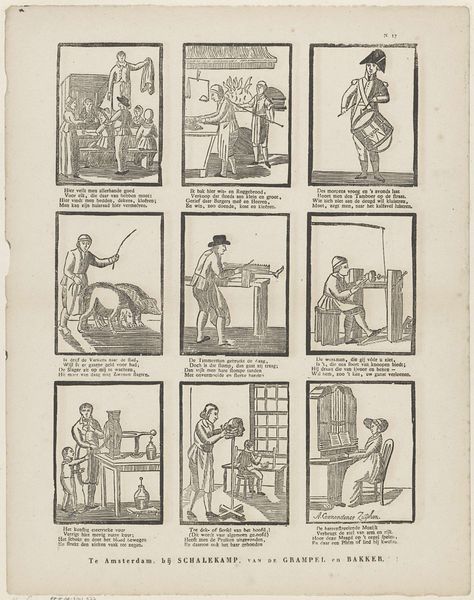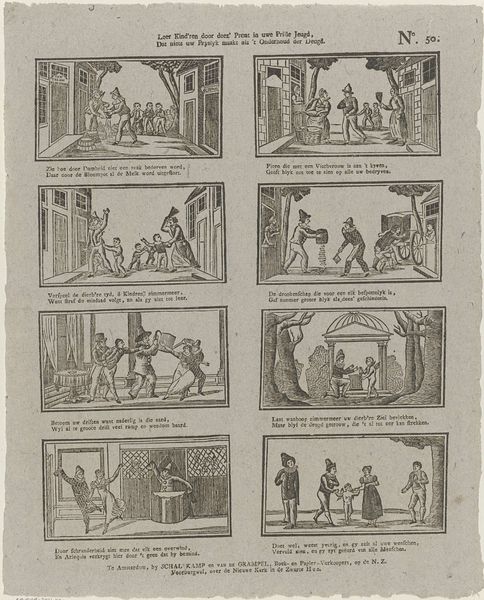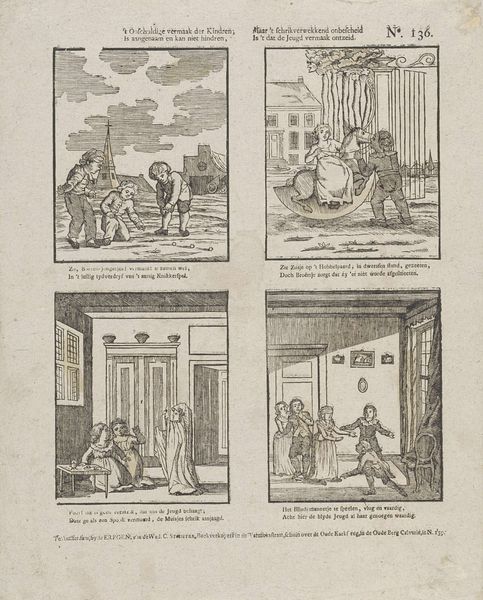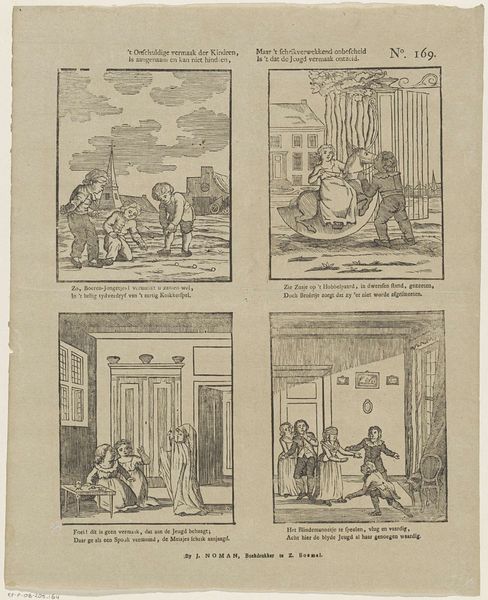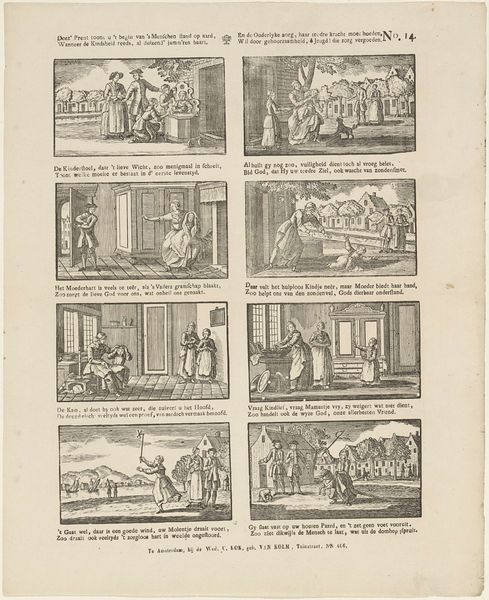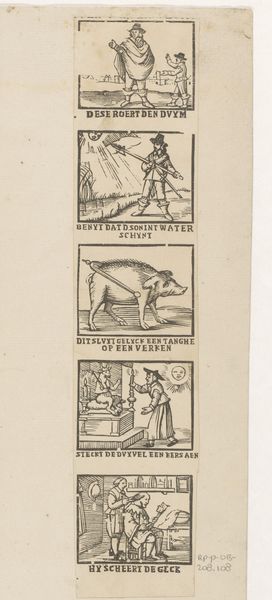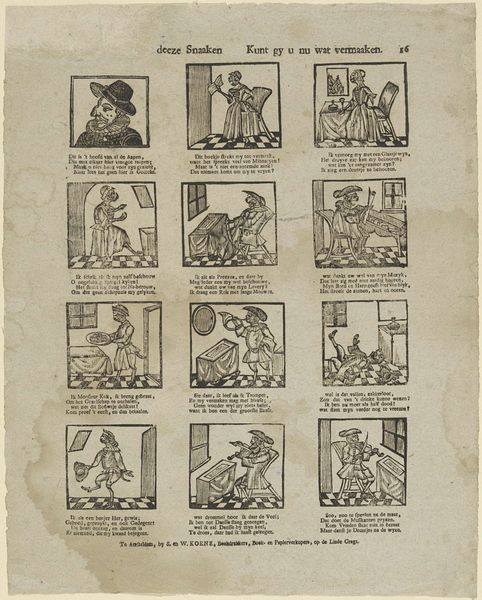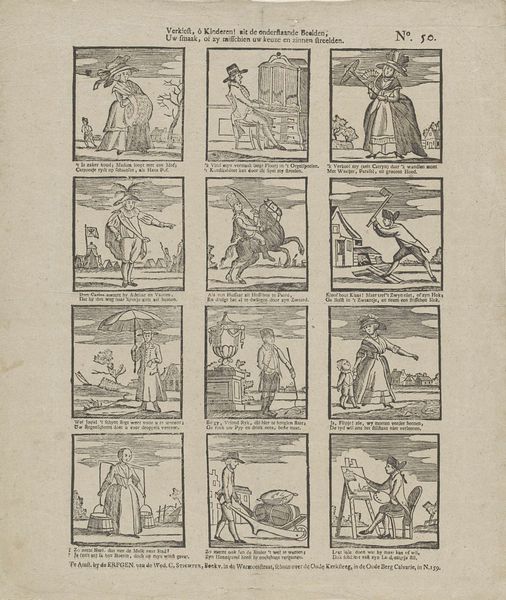![Afbeeldingh hoe seven wyven vechten om een mans broeck ende de vrou de broeck aentrecht [(...)] by Anonymous](/_next/image?url=https%3A%2F%2Fd2w8kbdekdi1gv.cloudfront.net%2FeyJidWNrZXQiOiAiYXJ0ZXJhLWltYWdlcy1idWNrZXQiLCAia2V5IjogImFydHdvcmtzL2I1YTg1MjZhLTcyODctNGE2ZC05YWMxLWNlNTI2YzNkZjJmMi9iNWE4NTI2YS03Mjg3LTRhNmQtOWFjMS1jZTUyNmMzZGYyZjJfZnVsbC5qcGciLCAiZWRpdHMiOiB7InJlc2l6ZSI6IHsid2lkdGgiOiAxOTIwLCAiaGVpZ2h0IjogMTkyMCwgImZpdCI6ICJpbnNpZGUifX19&w=3840&q=75)
Afbeeldingh hoe seven wyven vechten om een mans broeck ende de vrou de broeck aentrecht [(...)] Possibly 1700 - 1865
0:00
0:00
drawing, print, ink, woodcut, pen
#
drawing
#
comic strip sketch
#
narrative-art
# print
#
pen sketch
#
personal sketchbook
#
ink
#
idea generation sketch
#
sketchwork
#
folk-art
#
pen-ink sketch
#
woodcut
#
pen work
#
sketchbook drawing
#
pen
#
genre-painting
#
storyboard and sketchbook work
#
sketchbook art
Dimensions: height 259 mm, width 62 mm
Copyright: Rijks Museum: Open Domain
Curator: Here we have a fascinating woodcut, dating possibly from 1700 to 1865, attributed to an anonymous artist. Its full title is "Afbeeldingh hoe seven wyven vechten om een mans broeck ende de vrou de broeck aentrecht," which roughly translates to "Image of how seven women fight for a man's pants and the woman puts the pants right." It’s currently part of the Rijksmuseum collection. What are your initial thoughts? Editor: My first impression is… chaos, contained chaos. It’s intriguing. There's a storyboard-like quality to its sequential panels, creating an interesting narrative effect. But I’m also immediately struck by the overwhelming sense of gendered conflict; it leaps out at you. Curator: Indeed. These types of images often circulated as folk art, acting almost as proto-comic strips to relay moral tales. Notice how each panel offers a glimpse into domestic life or perhaps social commentary? I imagine they served a didactic purpose, warning against certain behaviors. Editor: Absolutely. And let's consider the very *object* of the dispute: the man's breeches. Clothing has always been deeply symbolic, a visual marker of identity and status. What does it mean to have all these women vying for control over this man's…pants? It screams of a struggle for power and control within a patriarchal system. Curator: Exactly. You have a point that control might be very connected to those visual images. From my viewpoint, such broad dissemination would likely affect how social identities were constructed, both for men and women of the period, if the work indeed served as a public spectacle to spread certain beliefs. Editor: And how fascinating that the concluding panel features a man and a woman, seemingly reconciled, both occupied in what looks like a slaughtering pig activity. Is this their mutually shared chore or mutual gain? Does this mean that their battle has reached the end? The possibilities of interpreting them can indeed be extended through multiple standpoints. Curator: It prompts reflection on the many public images used to spread or maintain social power dynamics. Overall, a rather insightful peek into a moment in history. Editor: Yes, an intriguing reminder that visual culture, even in its most unassuming forms, holds potent social meanings.
Comments
No comments
Be the first to comment and join the conversation on the ultimate creative platform.
